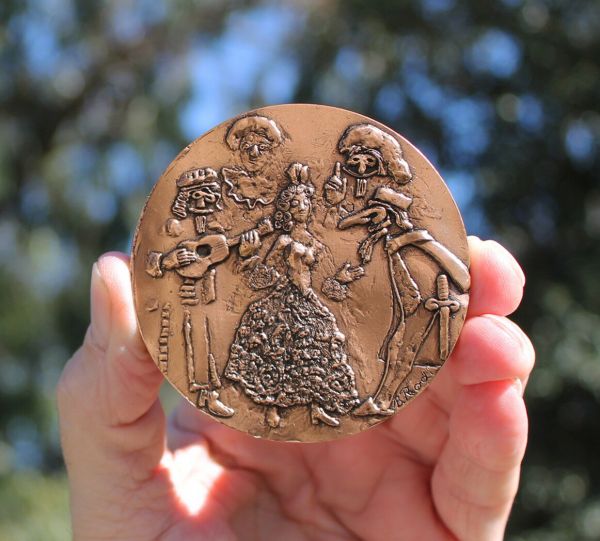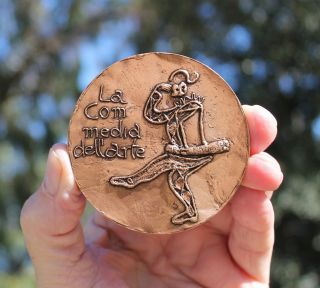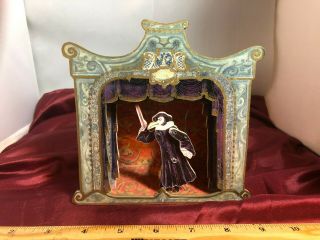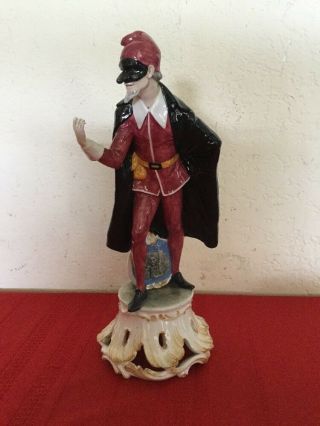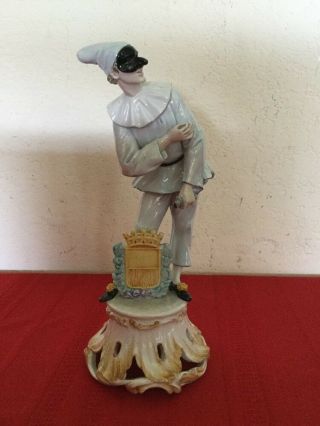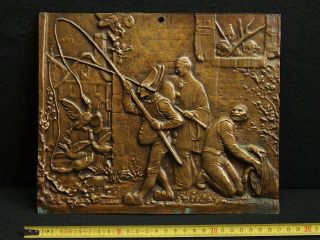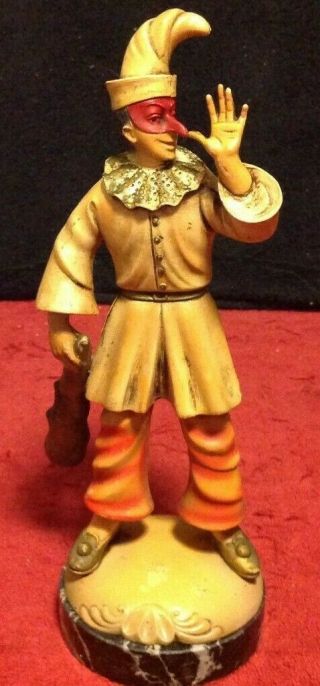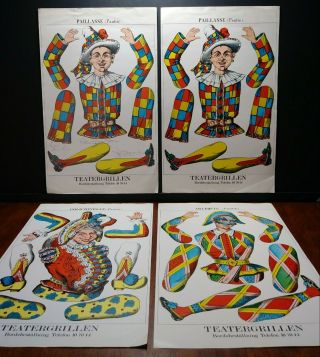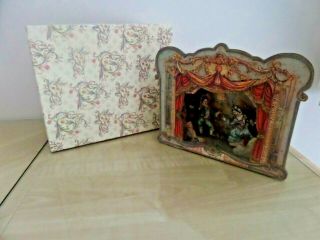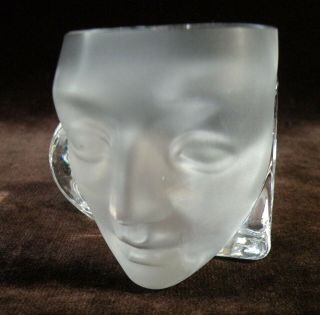France, Italy, Commedia Dell’arte, Theatre, Rodi
Item History & Price
| Reference Number: Avaluer:59721335 | Country/Region of Manufacture: France |
| Composition: Bronze | Circulated/Uncirculated: Circulated |
| Brand: Paris Mint, France |
This medal is a part of my French medals offer Visit my page with the offers, please.You will find many interesting items related to this subject. If you are interested in other medals, related to this subject, click here, Russia; related to France, related toTheater, film, photography Art This medal has been minted to commemorate the early form of the professional theatre, COMMEDIA dell’ARTE. This medaille has been designed by the Fre...nch medalist, Barbara RODI. Commedia dell'arte (Italian pronunciation: [komˈmɛːdja delˈlarte], comedy of the profession) was an early form of professional theatre, originating from Italy, that was popular in Europe from the 16th through the 18th century. Commedia dell'arte also is known as commedia alla maschera, commedia improvviso, and commedia dell'arte all'improvviso. av. The caracters of commedia dell’arterv. One of the characters of commedia dell’arte diameter – 72 mm (ca 3“)weight – 235.50 gr, (8.31 oz)metal – bronze, original patina Commedia is a form of theatre characterized by masked "types" which began in Italy in the 16th century and was responsible for the advent of actresses (Isabella Andreini) and improvised performances based on sketches or scenarios. Acommedia, such as The Tooth Puller, is both scripted and improvised. Characters' entrances and exits are scripted. A special characteristic of commedia dell'arte are the lazzi. A lazzo is a joke or "something foolish" or "witty", usually well known to the performers and to some extent a 'scripted' routine. Another characteristic of commedia dell'arte is pantomime, which is mostly used by the character Arlecchino (Harlequin). The characters of the commedia usually represent fixed social types and stock characters, such as foolish old men, devious servants, or military officers full of false bravado. The main categories of these characters include servants, old men, lovers, and captains. The characters are exaggerated "real characters", such as a know-it-all doctor called Il Dottore, a greedy old man called Pantalone, or a perfect relationship like the Innamorati.Many troupes were formed to perform commedia dell'arte, including I Gelosi (which had actors such as Isabella Andreini, and her husband Francesco Andreini), Confidenti Troupe, Desioi Troupe, and Fedeli Troupe. Commedia dell'arte was often performed outside on platforms or in popular areas such as a piazza. The form of theatre originated in Italy, but travelled throughout Europe and even to Moscow. The commedia genesis may be related to carnival in Venice, where by 1570 the author/actor Andrea Calmo had created the character Il Magnifico, the precursor to the vecchio (old man) Pantalone. In the Flaminio Scala scenario for example, Il Magnifico persists and is interchangeable with Pantalone, into the seventeenth century. While Calmo's characters (which also included the Spanish Capitano and a dottore type) were not masked, it is uncertain at what point the characters donned the mask. However, the connection to carnival (the period between Epiphany and Ash Wednesday) would suggest that masking was a convention of carnival and was applied at some point. The tradition in Northern Italy is centered in Mantua, Florence, and Venice, where the major companies came under the aegis of the various dukes. Concomitantly, a Neapolitan tradition emerged in the south and featured the prominent stage figure Pulcinella. Pulcinella has been long associated with Naples, and derived into various types elsewhere—the most famous as the puppet character Punch (of the eponymous Punch and Judy shows) in England. Influence in performance artThe expressive theatre influenced Molière's comedy and subsequently ballet d'action, thus lending a fresh range of expression and choreographic means. An example of a commedia dell'arte character in literature is the Pied Piper of Hamelin who is dressed as Harlequin.Music and dance were central to commedia dell'arte performance. Brighella was often depicted with a guitar, and many images of the commedia feature singing innamorati or dancing figures. In fact, it was considered part of the innamorati function to be able to sing and have the popular repertoire under their belt. Accounts of the early commedia, as far back as Calmo in the 1570s and the buffoni of Venice, note the ability of comici to sing madrigali precisely and beautifully. The danzatrice probably accompanied the troupes, and may have been in addition to the general cast of characters. For examples of strange instruments of various grotesque formations see articles by Tom Heck, who has documented this area.The works of a number of playwrights have featured characters influenced by the commedia dell'arte and sometimes directly drawn from it. Prominent examples include The Tempest by William Shakespeare, Les Fourberies de Scapin by Molière, Servant of Two Masters (1743) by Carlo Goldoni, the Figaro plays of Pierre Beaumarchais, and especially Love for Three Oranges, Turandot and other fiabe by Carlo Gozzi. Influences appear in the lodgers in Steven Berkoff's adaptation of Franz Kafka's The Metamorphosis.Through their association with spoken theatre and playwrights commedia figures have provided opera with many of its stock characters. Mozart's Don Giovanni sets a puppet show story and comic servants like Leporello and Figaro have commedia precedents. Soubrette characters like Susanna in Le nozze di Figaro, Zerlina in Don Giovanni and Despina in Così fan tutte recall Columbina and related characters. The comic operas of Gaetano Donizetti, such as Elisir d'amore, draw readily upon commedia stock types. Leoncavallo's tragic melodrama Pagliacci depicts a commedia dell'arte company in which the performers find their life situations reflecting events they depict on stage. Commedia characters also figure in Richard Strauss's opera Ariadne auf Naxos.Stock characters and situations also appear in ballet. Igor Stravinsky's Petrushka and Pulcinella allude directly to the tradition.



